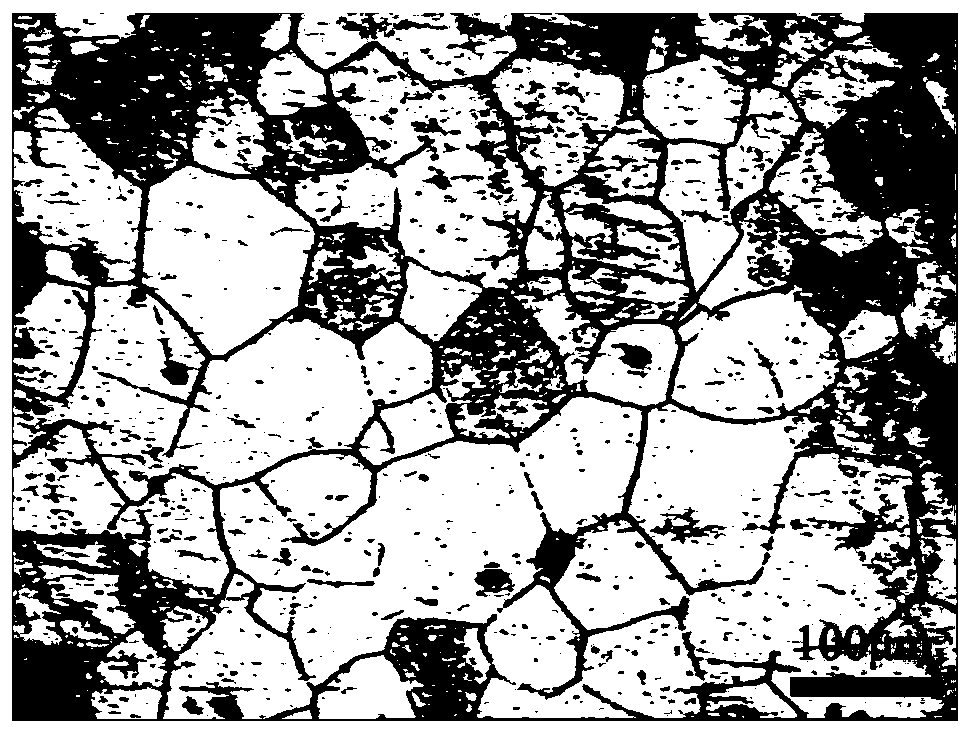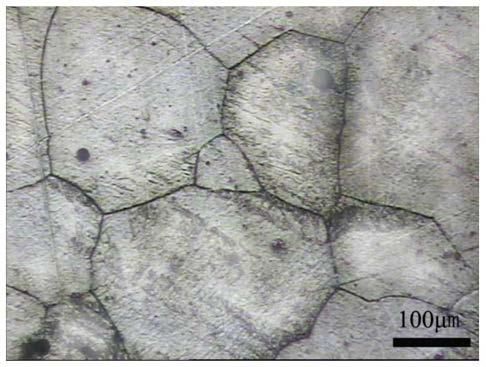Magnesium alloy material as well as preparation method and application of magnesium alloy material
A technology of magnesium alloys and master alloys, applied in chemical instruments and methods, manufacturing tools, heat treatment equipment, etc., can solve the problems of unstable discharge voltage, affecting the electrochemical performance and assembly performance of batteries, and low stiffness, and achieve negative discharge potential , shorten the activation time, the effect of high anode utilization
- Summary
- Abstract
- Description
- Claims
- Application Information
AI Technical Summary
Problems solved by technology
Method used
Image
Examples
preparation example Construction
[0019] The embodiment of the present invention also provides a method for preparing a magnesium alloy material, comprising the following steps:
[0020] The magnesium alloy material is formed by mixing and melting metals containing Hg, Ga, La, Ce and Mg. Specifically, the pure magnesium ingot is melted and mixed with pure gallium and an intermediate alloy containing Hg, La and Ce respectively.
[0021] More specifically, after melting the pure magnesium ingot under the condition of 690-750° C. in the smelting furnace, then add pure gallium and an intermediate alloy containing Hg, La and Ce respectively for mixing. Specifically, after melting the pure magnesium ingot at 690-750°C in the melting furnace, under the protection of the flux, add pure gallium, Mg-20%Hg master alloy, the Mg-15%La and the Mg -25% Ce. Smelting under the above conditions can ensure the smelting effect, and then ensure that the prepared magnesium alloy material has good performance.
[0022] It should ...
Embodiment 1
[0040] This embodiment provides a magnesium alloy material, which includes 1.2% Hg, 3.8% Ga, 5.0% La, 1.7% Ce, 0.007% Fe, 0.008% Cu, 0.006% Ni, and the rest is Mg.
[0041] This embodiment also provides a method for preparing a magnesium alloy material, comprising the following steps:
[0042] Mixed smelting: First, heat and melt the pure magnesium ingot (10 000g) with a magnesium content of 99.99% at 730°C, and add pure gallium (760g), Mg-20%Hg (1200g ), Mg-15% La (6667g), Mg-25% Ce (1360g), and smelted for 5 minutes to form a molten metal.
[0043] Then, the molten metal and the refining agent are mixed and added according to a mass ratio of 1.5%, stirred for 10 minutes, and then left to stand at 730° C. for 30 minutes, and then poured into a slab. The slab homogenization annealing temperature is 420°C, and the holding time is 19 hours; the surface oxide layer is removed from the slab after homogenization annealing, specifically, the operation of removing the surface oxide la...
Embodiment 2
[0047] This embodiment provides a magnesium alloy material, which includes 5.0% Hg, 0.3% Ga, 1.4% La, 2.1% Ce, 0.008% Fe, 0.006% Cu, 0.007% Ni, and the rest is Mg.
[0048] This embodiment also provides a method for preparing a magnesium alloy material, comprising the following steps:
[0049] Mixed smelting: First, heat and melt the pure magnesium ingot (11393g) with a magnesium content of 99.99% at 750°C, and add pure gallium (60g) and Mg-20% Hg (5000g) under the protection of RJ-2 flux , Mg-15% La (1867g), Mg-25% Ce (1680g), and smelted for 5 minutes to form a molten metal.
[0050] Then, the molten metal and the refining agent are mixed and added according to a mass ratio of 2.5%, stirred for 30 minutes, then left to stand at 750° C. for 20 minutes, and then cast into slabs. The slab homogenization annealing temperature is 350°C, and the holding time is 22 hours; the surface oxide layer is removed from the slab after homogenization annealing, specifically, the operation o...
PUM
 Login to View More
Login to View More Abstract
Description
Claims
Application Information
 Login to View More
Login to View More - R&D
- Intellectual Property
- Life Sciences
- Materials
- Tech Scout
- Unparalleled Data Quality
- Higher Quality Content
- 60% Fewer Hallucinations
Browse by: Latest US Patents, China's latest patents, Technical Efficacy Thesaurus, Application Domain, Technology Topic, Popular Technical Reports.
© 2025 PatSnap. All rights reserved.Legal|Privacy policy|Modern Slavery Act Transparency Statement|Sitemap|About US| Contact US: help@patsnap.com



